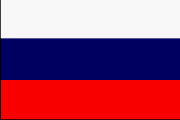





The solid-propellant RT-15M missile was the sea-based counterpart of the RT-15 land-based missile, known in the West as the SS-14 SCAMP. Both consisted of the second and third stage of the RT-2, a prototype solid-fueled ICBM eventually deployed as the SS-13 SAVAGE. The 667 Yankee submarine, originally designed to carry the liquid-fueled R-21 missiles with the D-4 launch system, was to carry the RT-15M using the D-7 launch systems.
An order of the ministerial council on 04 April 1961 authorized the development of the system by SKB-385, under the industrial designation 4K22. However, SKB-385 was not particularly enthusiastic with the RT-15M missile, regarding liquid-propellant missiles as more promising The solid-propellant RT-15M missile, with a range of 2400 km, weighed three times more than the liquid propellant R-27 missile which had similar range capabilities.
Testing lagged substantially behind the initial schedule. Initially the missile underwent pop-up tests, with 5 launches conducted on "613" submarines. Beginning in late 1963 a series of 20 flight tests were conducted of the missile from Golf I submarines. The demonstration of underwater launch from a flooded platform was not completed until the middle of 1964. However, in July 1963 the initiation of integrated testing was postponed, pending successful results with tests of the solid-fuel RT-2 ICBM. Subsequently, development of the RT-15M missile and the D-7 launch system was halted due to the limited range and large weight and overall dimensions of the missile.
Specifications |
||
|
DIA |
||
|
NATO |
||
|
Bilateral |
||
|
Service |
RT-15M |
|
|
OKB/Industry |
||
|
Design Bureau |
SKB-385 |
|
|
Approved |
||
|
Years of R&D |
||
|
Engineering and Testing |
||
|
First Flight Test |
1964 |
|
|
IOC |
||
|
Deployment Date |
Not deployed |
|
|
Launch system |
D-7 |
|
|
Submarine |
667 Delta |
|
|
Type of Warhead |
Single |
|
|
Warheads |
1 |
|
|
Yield (mt) |
1 |
|
|
Payload (t) |
||
|
Total length (m) |
10.5 |
|
|
Total length w/o warhead (m) |
||
|
Missile Diameter (m) |
1.5 |
|
|
Launch Weight (t) |
50 |
|
|
Fuel Weight (t) |
||
|
Range (km) |
2400 |
|
|
CEP (m) (Russian Sources) |
||
|
CEP (m) Western Sources) |
||
|
Number of Stages |
2 |
|
|
Booster guidance system |
Inertial autonomous |
|
|
1st stage |
2nd stage |
|
|
Length (m) |
||
|
Body diameter (m) |
||
|
Fueled weight (t) |
||
|
Dry weight (t) |
||
|
Engine Designation |
||
|
Propellants |
Solid |
Solid |
|
Fuel |
||
|
Oxidizer |
||
|
Burning time (s) |
||
|
Verniers Thrust Sea Level/Vacuum (kn) |
||
|
Specific Impulse (s) |
||
|
Launching Technique |
Underwater start |
|
|
Firing condition |
|
|
